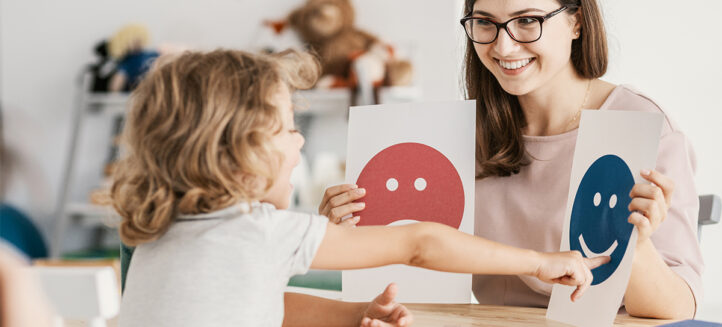Back to School: Smoothing the Transition for Children with Autism
August 17, 2023

Summer is coming to an end, and soon a new school year will begin. Moving to a different classroom, grade, or school can be a stressful experience for any child. For children with autism, fear of the unknown and anxiety about changes to their routines are often even more challenging.
Butterfly Effects, one of the nation’s leading providers of applied behavior analysis (ABA) therapy, wants to help make this transition as smooth as possible for your family. Every child is unique and handles change differently – especially children with autism. But with some preparation and planning, parents can play a big role in getting the new school year off to a great start.
Embrace the change
After months of a more relaxed schedule, the thought of returning to a structured school schedule may fill your child with dread. It’s best to begin talking about school in a positive way, so their excitement can build. What will a typical day in school look like? Who will their new teacher(s) be? What are they most eager to learn about? Have positive discussions as often as possible in the weeks leading up to the first day of school, and encourage them to ask questions as well. Change becomes less scary the more we talk about it.
Make a visual impact by hanging a calendar that shows how many days are left until the first day of school, then crossing each day off together. If your child is anxious about when school will start, the calendar removes any element of surprise – they will know exactly when this change is coming.
Practice makes perfect
You should also begin waking your child a little earlier each morning, so they become acclimated to school wake-up time way before the first day. You can start slow, setting your alarm 30 minutes earlier each week. Then do a few “practice mornings” near the end of summer break, so your child knows what to expect before they leave for school.
If your child responds well to visual schedules, create one that includes everything from brushing their teeth and getting dressed to eating breakfast and getting on the bus. Your child can also practice carrying their lunchbox or wearing their backpack at home, so school routines feel even more familiar.
Seeing is believing
It’s a good idea to drive to and from the school multiple times, so your child becomes familiar with the route. If your child will ride a school bus, ask if they can meet their bus driver ahead of time. Many bus drivers do practice runs during the last week of summer break, so it may be possible to make a quick introduction.
Many schools give children and parents the opportunity to meet their teacher(s) before the first day, which is an ideal situation. If not, see if you can arrange a self-guided tour of the school through your case manager. Visit the main office, cafeteria, gym, library, and bathrooms – any room or area where your child may spend time during the upcoming school year. Bring a camera with you and take photos, so you can talk more about the school at home.
If you have the ability to show your child photos of their teacher(s), classroom, and/or classmates, even better! Anything you share in advance should help ease their transition.
New school? Schedule an IEP meeting
If your child is attending a new school, be sure to schedule an IEP (Individualized Education Program) meeting before school begins. Together, you and your child’s team of teachers and therapists can set goals for your child to work on throughout the year.
Teachers often ask parents to complete a survey about their child’s learning style, strengths, weaknesses, possible sensory issues, and more. Feel free to share any personal information that can help teachers and school staff get to know your child and their needs better.
If your child already has a behavior plan that has been working, ask that it be implemented immediately at the beginning of the school year. And if your child struggles with sensory overload, make sure that whatever item provides them comfort will be on hand, especially during the first few weeks.
Learn more about Butterfly Effects and ABA therapy
Butterfly Effects has served over 10,000 children with autism through our step-by-step, family-centric approach to ABA therapy. We understand the vital role that family plays in a child with autism’s life, since family members are their constant and most important teachers. Our goal is to deliver successful ABA treatment in close partnership with families like yours, helping children with autism live more independent and joyous lives.
Butterfly Effects currently operates in 12 states, employing more than 100 board-certified behavior analysts and 1,000+ behavior technicians. We invite you to schedule a phone interview with our client services team to determine if your child is a good fit for our ABA therapy services. To learn more, visit www.butterflyeffects.com today.





